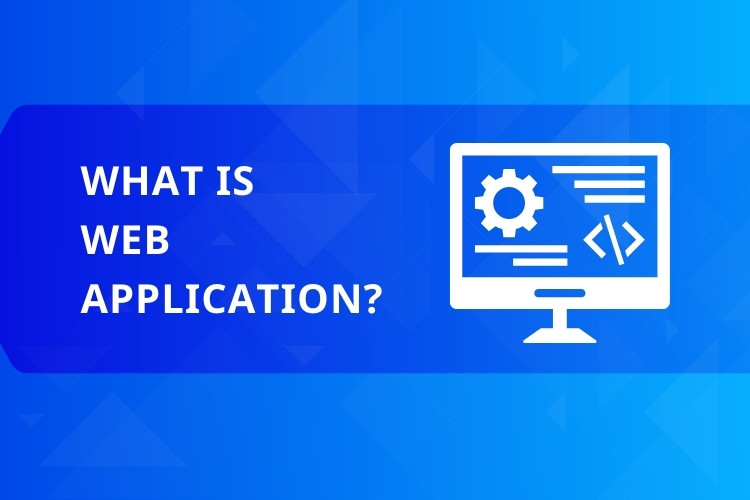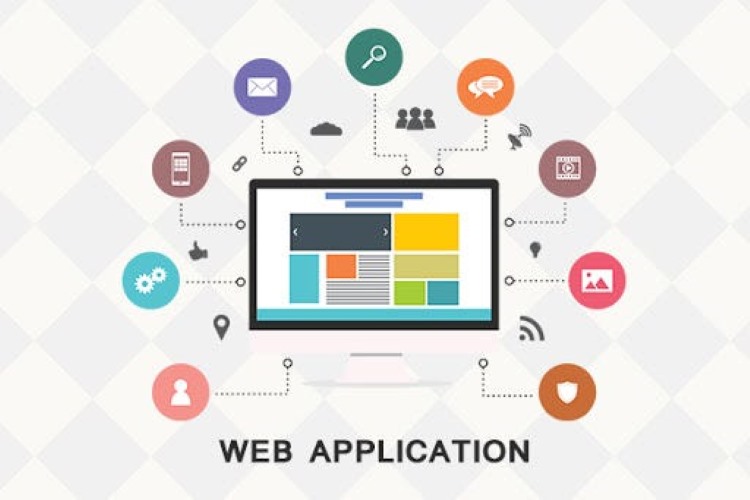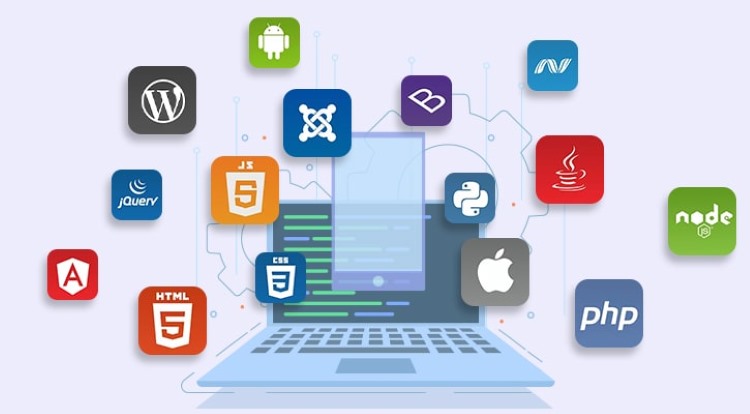In today’s digital world, you interact with countless online tools and services. Many of these are web applications. But what exactly does that term mean? Understanding web applications is key to grasping how much of the modern internet functions.
This guide provides a comprehensive explanation of web applications. We will cover their definition, how they work, key characteristics, common examples, different types, and how they compare to websites and native apps. Let’s dive in.
What is a Web Application?
A web application (often shortened to web app) is a software program. It runs on a remote computer called a web server. Users access and interact with it using a web browser, like Google Chrome or Mozilla Firefox, over the internet or a private network (intranet).

Unlike traditional desktop software, you typically don’t need to install a web application directly onto your computer or mobile device. You simply navigate to its specific web address (URL) in your browser to start using it. This makes web apps highly accessible.
Web applications function using a model known as client-server architecture. Think of it as a conversation. Your device running the web browser acts as the client. The remote computer running the application software and storing data is the web server.
The client (your browser) sends requests for information or actions to the server across the network. The server processes these requests. It might involve calculations, retrieving data from a database, or updating information based on your input.
After processing, the server sends a response back to your browser. This response usually contains data formatted using standard web technologies. These include HTML (HyperText Markup Language) for the content’s structure and meaning.
CSS (Cascading Style Sheets) is also used. CSS controls the visual presentation, like colors, fonts, and layout. JavaScript is often included to make the application interactive and dynamic directly within your browser, without needing to constantly ask the server for updates.
Your browser then interprets these technologies (HTML, CSS, JavaScript). It renders the information visually, creating the User Interface (UI) you see and interact with on your screen. This entire cycle happens seamlessly, often many times per second.
A core concept is interactivity. Web applications are designed for user input and manipulation of data. They go far beyond simply displaying static information, allowing you to perform tasks, manage accounts, and engage with dynamic content.
How Do Web Applications Work?
Let’s delve deeper into the mechanics. When you type a web app’s address (like mail.google.com) into your browser and hit Enter, your browser sends an HTTP (Hypertext Transfer Protocol) request to the web server associated with that address.
This request essentially says, “Please send me the resources needed to display the Gmail login page.” The web server receives this request. It identifies the specific application logic required to fulfill it. This might involve running code written in languages like Python, Java, PHP, or Ruby.
The server-side code executes. It might check if you’re already logged in via a cookie, prepare the login form structure, or fetch necessary user interface elements. If data is needed (like saved usernames), the server communicates with a database.
A database is an organized collection of data, like user information or email content. The server retrieves or modifies data in the database as required by the application logic. It then assembles the response to send back to your browser.
This response package typically contains the HTML structure, CSS styling rules, and JavaScript code mentioned earlier. Your browser receives this package. It parses the HTML to build the page structure, applies the CSS for visual styling, and executes the JavaScript for interactive features.
The result is the fully rendered, interactive web application page you see – the login screen, your inbox, or a document editor. Every click, every form submission, initiates a new request-response cycle, allowing continuous interaction.
Client-Side vs. Server-Side Explained
Understanding the difference between client-side and server-side operations is crucial. Client-side refers to everything that happens within the user’s web browser on their local device. This primarily involves rendering the UI based on HTML, CSS, and JavaScript received from the server.
Client-side scripting (mainly JavaScript) handles immediate user interactions. Think about form validation (checking if you entered a valid email format before submitting), interactive menus, or animations. These happen directly in the browser for a faster User Experience (UX).
Server-side refers to all processing that occurs on the web server. This includes handling the core application logic, securely accessing and managing databases, authenticating users, and processing complex business rules. Server-side languages (Python, Java, etc.) execute these tasks.
Security is often managed server-side. Sensitive operations like processing payments or accessing private data happen on the server, which is generally a more controlled and secure environment than the user’s browser. The client-side code often makes requests to the server-side for these secure operations.
This separation allows web applications to be both responsive (client-side) and powerful (server-side). It distributes the workload effectively between the user’s device and the application’s central server infrastructure.
Key Characteristics and Benefits of Web Applications
Web applications possess distinct characteristics that offer significant advantages:
1. Cross-Platform Accessibility: A major benefit is accessibility. Since web apps run in a standard web browser, they typically work on any operating system (Windows, macOS, Linux, ChromeOS) without modification. Users have a consistent experience regardless of their device.
2. No Installation Required (Usually): Users generally don’t need to download or install anything. Access is as simple as opening a browser and navigating to the URL. This removes friction for users and simplifies distribution for developers.
3. Centralized Updates and Maintenance: Updates are deployed directly on the web server. Once updated, all users automatically access the latest version the next time they load the application. This eliminates the need for users to manage updates themselves, ensuring consistency.
4. Scalability: Well-designed web applications can often be scaled more easily than desktop counterparts. Server resources (processing power, memory, storage) can be increased to handle a growing number of users or increasing data loads, often facilitated by cloud hosting platforms.
5. Cost-Effectiveness (in certain aspects): Developing one web application that works across all platforms can be more cost-effective than building and maintaining separate native applications for Windows, macOS, iOS, and Android. However, complex web apps still require significant investment.
6. High Interactivity: Web technologies allow for rich, interactive user experiences. Features like real-time collaboration (like in Google Docs), drag-and-drop interfaces, and dynamic content updates are common in modern web apps.
7. Wide Reach: Because they only require a browser and internet connection, web applications can potentially reach a vast audience globally without the hurdles of app store approvals or specific hardware requirements.
These characteristics make web applications suitable for a wide range of tasks, from simple utilities to complex enterprise systems.

Examples of Web Applications You Use Every Day
You likely use numerous web applications daily without explicitly labeling them as such. Understanding these examples helps solidify the concept:
- Webmail Clients: Services like Gmail, Outlook.com, and Yahoo Mail accessed through your browser are prime examples. You log in, read, compose, and manage emails – all within the browser interface. They interact heavily with servers to fetch and send mail.
- Online Office Suites: Google Workspace (Docs, Sheets, Slides) and Microsoft 365 online allow you to create, edit, and collaborate on documents, spreadsheets, and presentations directly in your browser. These are highly complex web apps.
- Social Media Platforms: When you use Facebook, Twitter, LinkedIn, or Instagram via their websites, you’re using their web applications. You post updates, interact with content, and manage your profile through the browser interface.
- E-commerce Functionality: While an online store’s product catalog might resemble a website, the interactive parts – the shopping cart, user account management, and the checkout process – are web application features. Amazon’s checkout is a sophisticated web app component.
- Online Banking Portals: Accessing your bank account online to check balances, transfer funds, or pay bills involves using your bank’s secure web application. These require robust server-side processing and security.
- Project Management & Collaboration Tools: Platforms like Trello, Asana, Jira, and Slack (web version) are web applications designed for team collaboration, task tracking, and communication, featuring real-time updates.
- Streaming Services (Web Players): Using Netflix, YouTube, or Spotify through their websites involves interacting with their web application players to browse content and stream media.
These examples highlight the diversity and ubiquity of web applications in modern digital life, handling tasks from communication and productivity to entertainment and finance.
Common Types of Web Applications
Web applications are not monolithic; they come in various types, categorized by their structure, functionality, or how they handle content:
- Static Web Applications: These are the simplest type. They deliver content directly from the web server’s file system without much server-side processing. Content is generally fixed and doesn’t change based on user interaction. While technically applications, they often function more like interactive websites.
- Dynamic Web Applications: This is the most common type. They generate content on the fly based on user input, database information, or other parameters. Server-side scripting is essential. Most examples listed previously (Gmail, Facebook) are dynamic web apps.
- Single Page Applications (SPAs): SPAs load a single HTML page initially. As the user interacts, JavaScript dynamically rewrites parts of the current page instead of loading entirely new pages from the server. This often results in a smoother, faster, more app-like feel. Examples include Gmail and Trello.
- Multi-Page Applications (MPAs): These are traditional web applications where interactions (like clicking a link) typically trigger a request to the server, which then renders and sends back a completely new HTML page to the browser. Most large websites with varied content sections use this model.
- E-commerce Applications: These are dynamic web apps specifically designed for online buying and selling. They include features like product catalogs, shopping carts, user accounts, payment gateway integration, and order management systems. Amazon is a large-scale example.
- Portal Web Applications: Portals provide a single point of access to various resources, information, or services, often requiring users to log in. Examples include university portals for students or corporate intranets.
- Content Management Systems (CMS): While CMS platforms like WordPress can power websites, their administrative backends are complex web applications. They allow users to create, edit, manage, and publish digital content without needing deep technical knowledge.
- Progressive Web Apps (PWAs): PWAs are a modern type of web application that leverages new browser capabilities. They aim to provide an experience similar to native apps, including features like offline access, push notifications, and the ability to be “installed” (added to the home screen).
Understanding these types helps in choosing the right approach when developing a new web application or recognizing the underlying structure of the tools you use.
Web Application vs. Website: What’s the Difference?
The terms “website” and “web application” are often used interchangeably, but there’s a key distinction, primarily centered on interactivity and functionality.
A website is primarily informational. Its main purpose is to display content to the user. Think of online brochures, news sites, or blogs where the user mainly consumes information (reads text, views images). While websites can have some interactive elements (like contact forms or search bars), their core function is content delivery.
A web application, conversely, is primarily functional and interactive. Its main purpose is to allow users to perform tasks. Users don’t just consume content; they actively manipulate data, manage processes, or use tools. Interaction is central to its value proposition.
Consider a company’s site: The homepage describing the company and its services is part of the website. If that site includes a tool for customers to log in, manage their account, track orders, and configure services – that tool is the web application component.
Here’s a simple comparison:
- Website: Focus = Content Consumption. Interaction = Low/Simple. Example: A news article page.
- Web Application: Focus = Task Performance. Interaction = High/Complex. Example: An online photo editor.
Many modern online destinations blur the lines, containing both informational website elements and functional web application components integrated seamlessly. However, understanding the primary purpose – information display vs. task execution – helps differentiate them.

Web Application vs. Native Application (Mobile/Desktop Apps)
Another important comparison is between web applications and native applications. Native apps are software programs developed specifically for a particular platform or operating system (like iOS, Android, Windows, macOS) and installed directly onto the device.
Here are the key differences:
- Installation: Native apps require explicit download and installation (e.g., from an app store). Web apps are accessed via a browser and typically require no installation. PWAs slightly blur this by allowing “add to home screen.”
- Platform Dependency: Native apps are platform-specific (an iOS app won’t run on Android). Web apps are generally platform-independent, running on any device with a compatible browser.
- Access Method: Native apps are launched from an icon on the device. Web apps are accessed by navigating to a URL in a browser.
- Performance: Native apps can often achieve higher performance and smoother graphics because they have direct access to device hardware and operating system resources. Web apps operate within the constraints of the browser sandbox, which can sometimes limit performance.
- Offline Capabilities: Native apps can be designed to work fully offline. Traditional web apps require an internet connection. PWAs are closing this gap by enabling some offline functionality for web apps through service workers and caching.
- Updates: Native apps usually require users to download and install updates. Web app updates are managed centrally on the server, ensuring users always access the latest version.
- Development: Developing native apps often requires separate codebases for different platforms (iOS/Android). Web apps use standard web technologies (HTML, CSS, JS), potentially reducing development effort for cross-platform reach, though complex web apps are still challenging to build.
The choice between developing a web app or a native app depends heavily on the specific requirements, target audience, desired performance, offline needs, and development resources. Often, businesses offer both to cater to different user preferences.
Core Technologies Used in Web Applications
Building a functional web application involves a combination of different technologies working together, often referred to as the “technology stack.” While stacks vary widely, most web apps utilize core frontend and backend components.
Frontend (Client-Side): This is what the user sees and interacts with in their browser.
- HTML (HyperText Markup Language): Provides the fundamental structure and content of the web page.
- CSS (Cascading Style Sheets): Controls the visual presentation, layout, colors, and fonts.
- JavaScript: Enables interactivity, dynamic content updates, and complex UI behaviors within the browser.
- Frameworks/Libraries (Optional but common): Tools like React, Angular, and Vue.js provide pre-built components and structures to streamline complex JavaScript development for SPAs and interactive UIs.
Backend (Server-Side): This is the engine running on the web server that powers the application.
- Server-Side Programming Language: Executes the core application logic. Popular choices include Python (with frameworks like Django, Flask), Java (Spring, JSF), Ruby (Ruby on Rails), PHP (Laravel, Symfony), Node.js (using JavaScript on the server via Express.js), and C# (.NET).
- Web Server Software: Listens for requests from browsers and serves responses. Common examples are Apache and Nginx.
- Database Management System (DBMS): Stores and manages application data. Options include relational databases (MySQL, PostgreSQL) using SQL (Structured Query Language) or NoSQL databases (MongoDB, Cassandra) for different data structures.
- APIs (Application Programming Interfaces): Often used to allow different software components (like the frontend and backend, or the web app and other services) to communicate and exchange data in a standardized way.
Understanding these core technology areas provides insight into the different skills and components required to build and maintain robust web applications.
When to Choose a Web Application
Web applications offer a powerful and flexible way to deliver software functionality. Choosing to build or use a web application is often ideal when:
- Broad Accessibility is Key: You need your application to be easily reachable by users across different devices and operating systems without installation barriers.
- Frequent Updates Are Required: Centralized updates ensure all users are always on the latest version, simplifying maintenance and rollout of new features.
- Collaboration is Central: Web apps excel at enabling real-time collaboration among multiple users (e.g., shared document editing).
- Internet Connectivity is Assumed: The core functionality relies on accessing server-side resources or real-time data.
- Development Resources Favor Cross-Platform: You want to avoid building and maintaining separate native codebases for different platforms.
- Integration with Other Web Services is Needed: Web apps can easily integrate with other online services via APIs.
In conclusion, web applications are versatile software programs accessed via web browsers, powered by client-server architecture. They form the backbone of much of the interactive internet, offering accessibility and powerful functionality for countless tasks, distinct from both static websites and installable native applications. Understanding their nature is fundamental in today’s technology landscape.
Reliable hosting is crucial for effective web applications. Explore Vietnam VPS for strong, stable performance. They utilize new-gen AMD EPYC Gen 3 CPUs and NVMe U.2 SSDs, high bandwidth, and advanced virtualization, delivering high-speed, reputable hosting solutions with optimized capacity at affordable prices.
